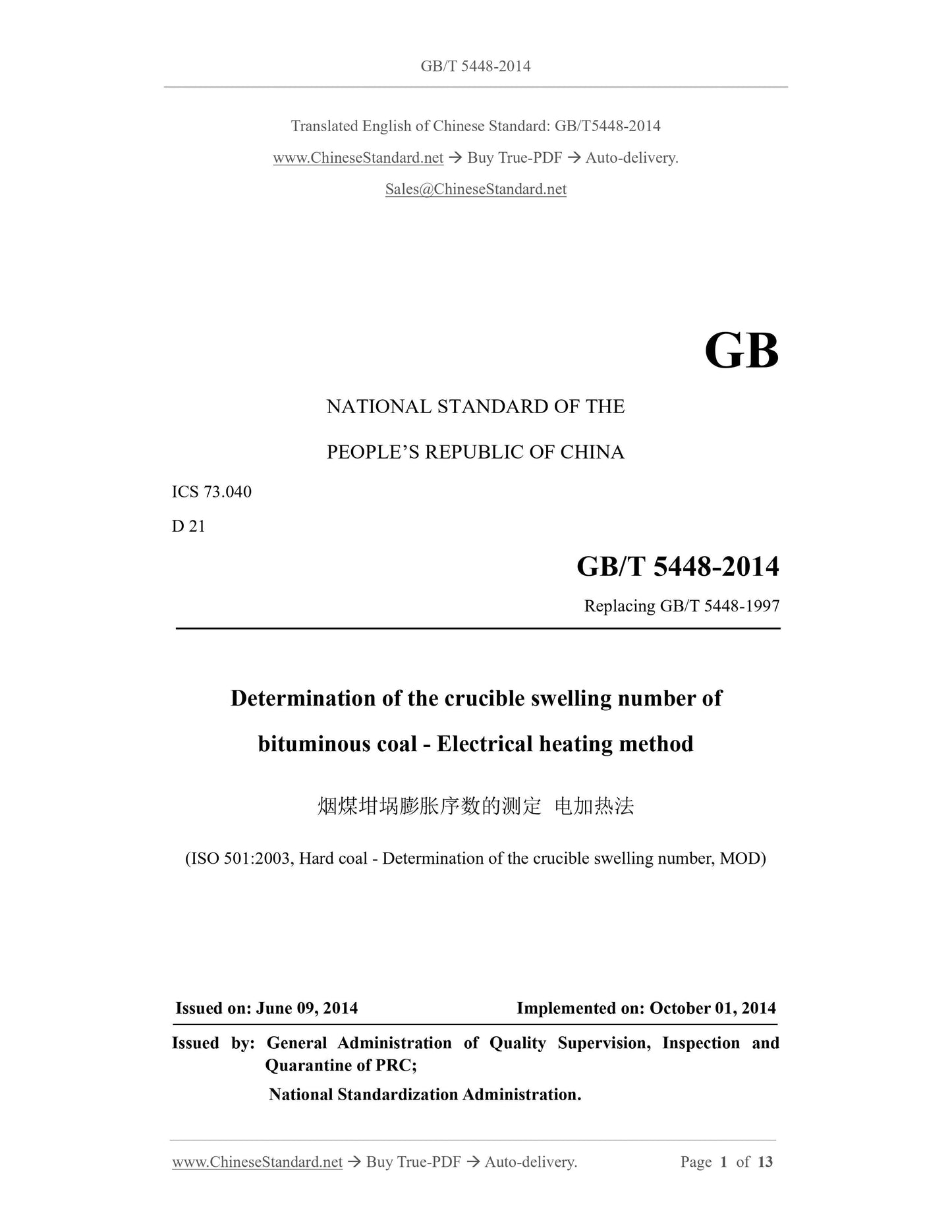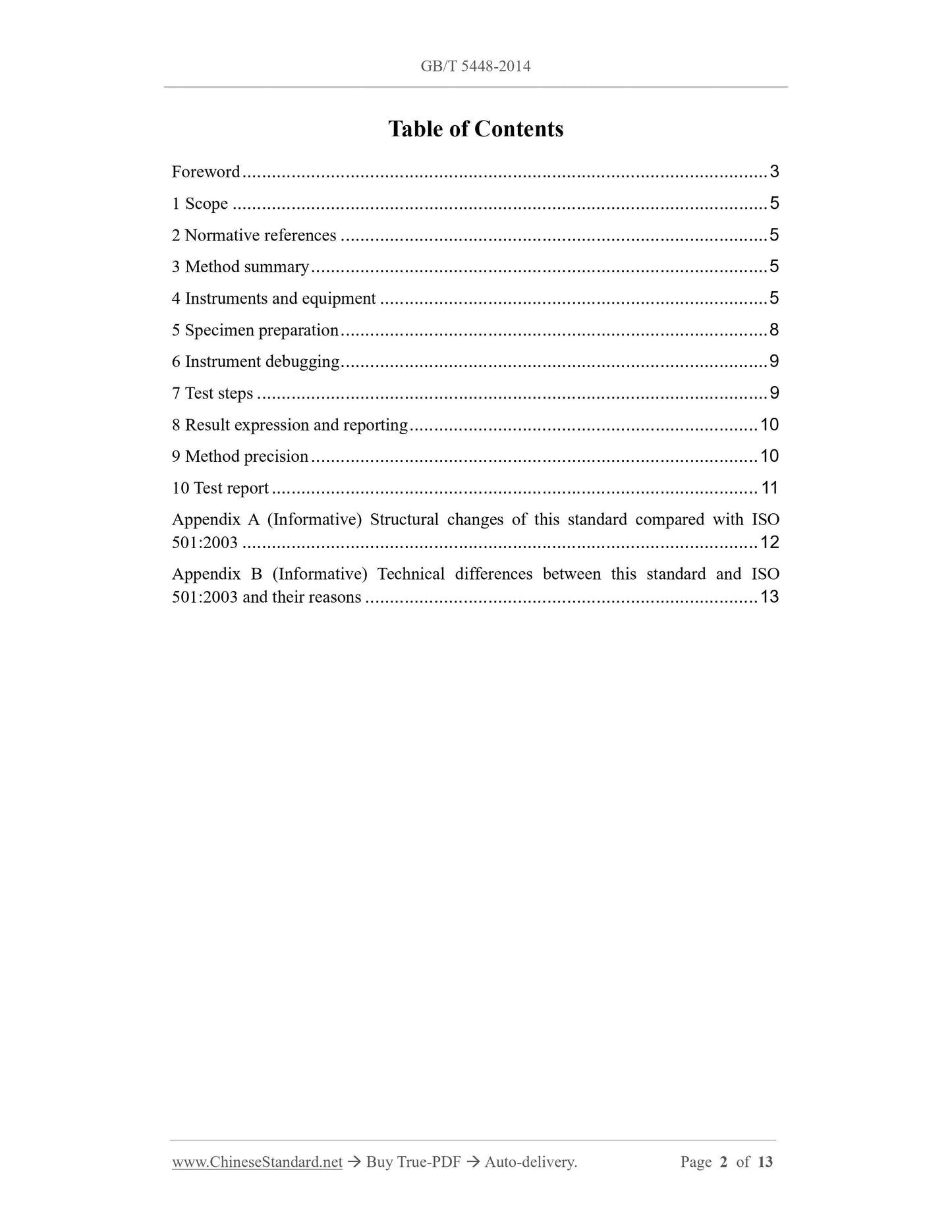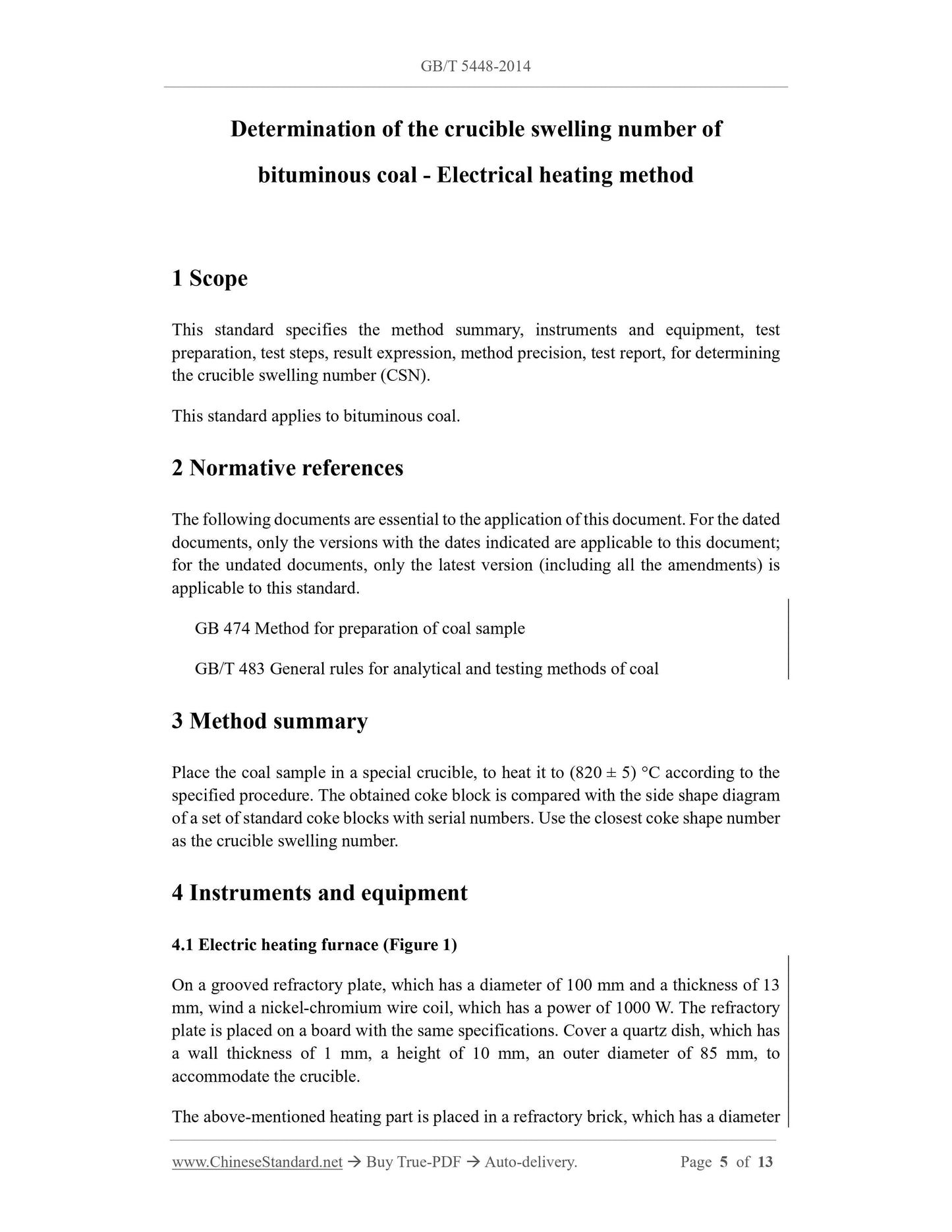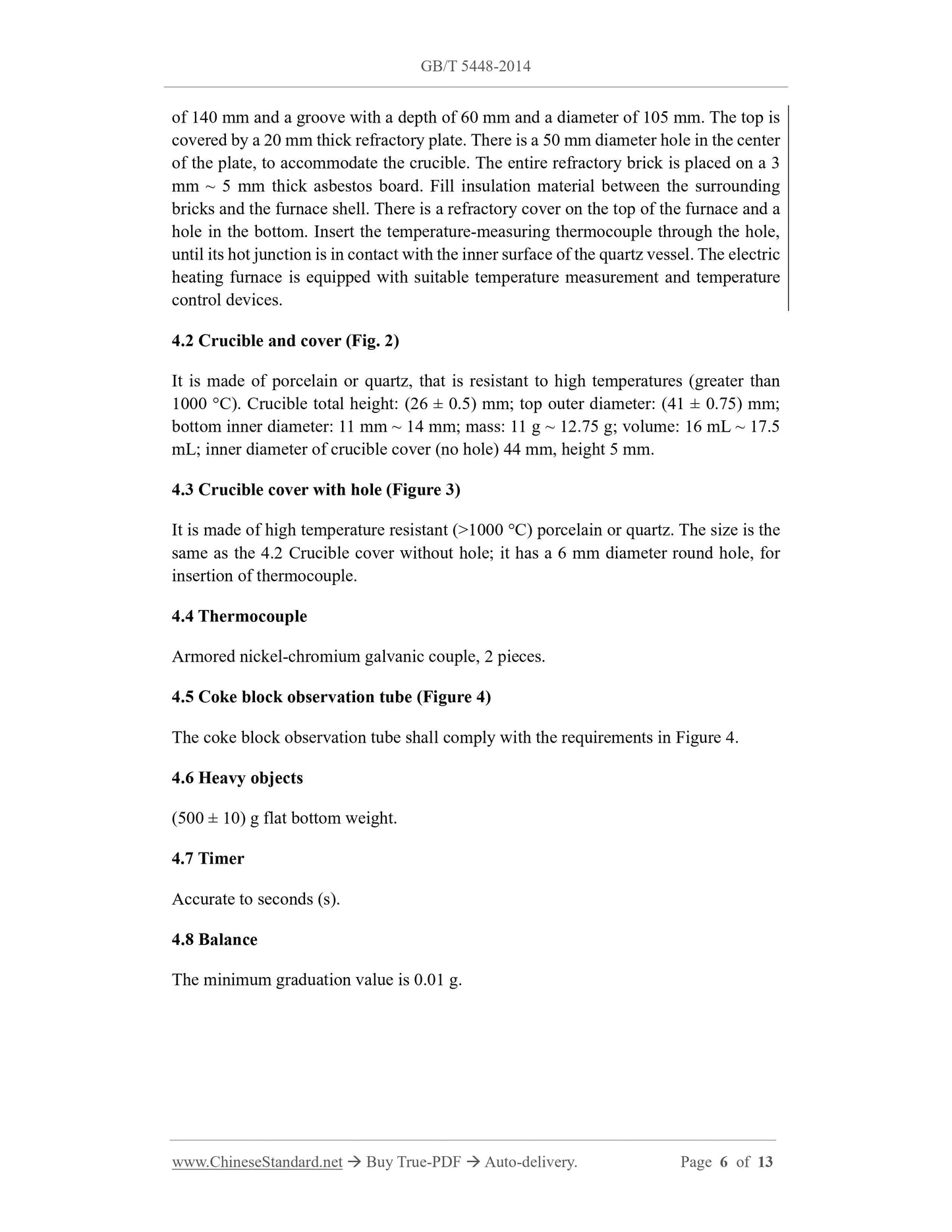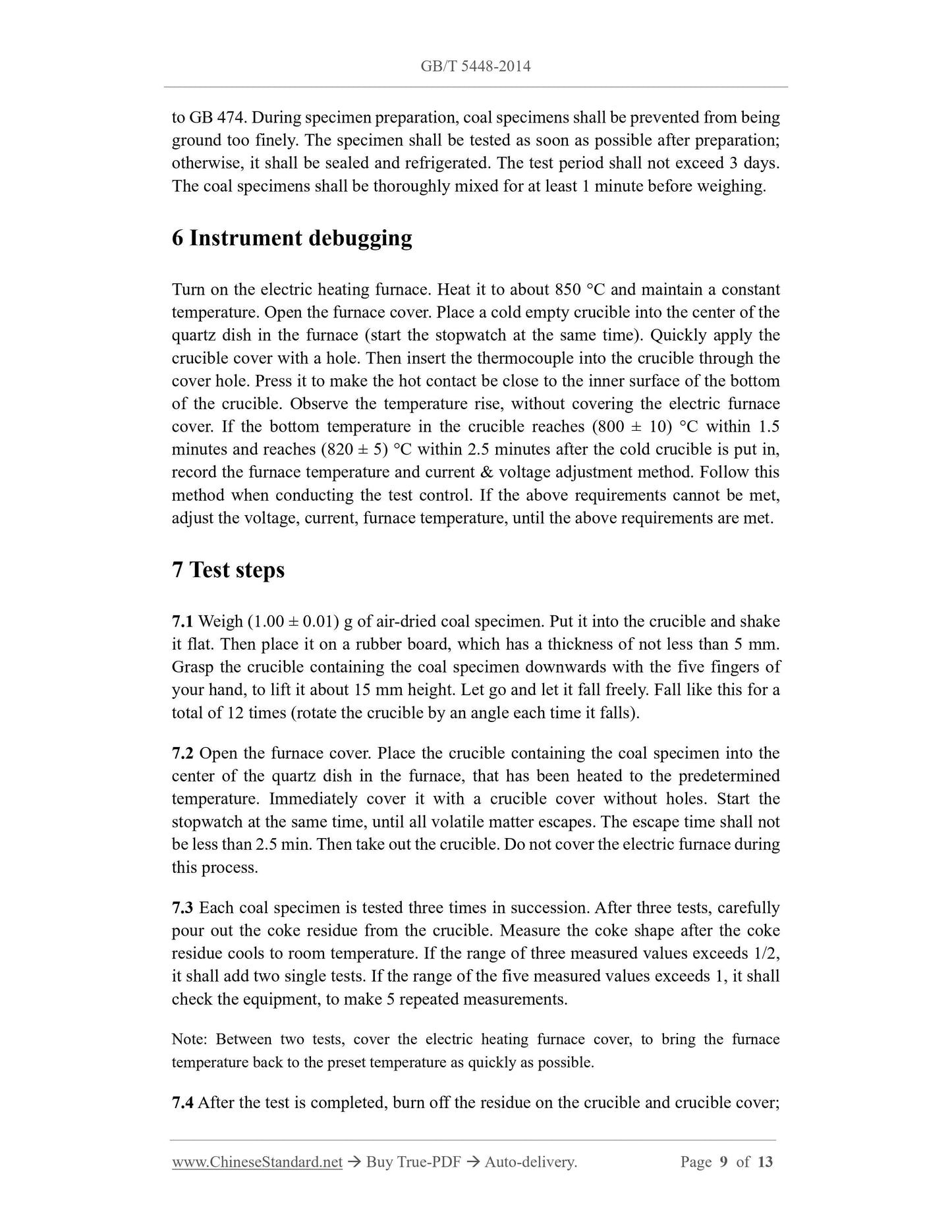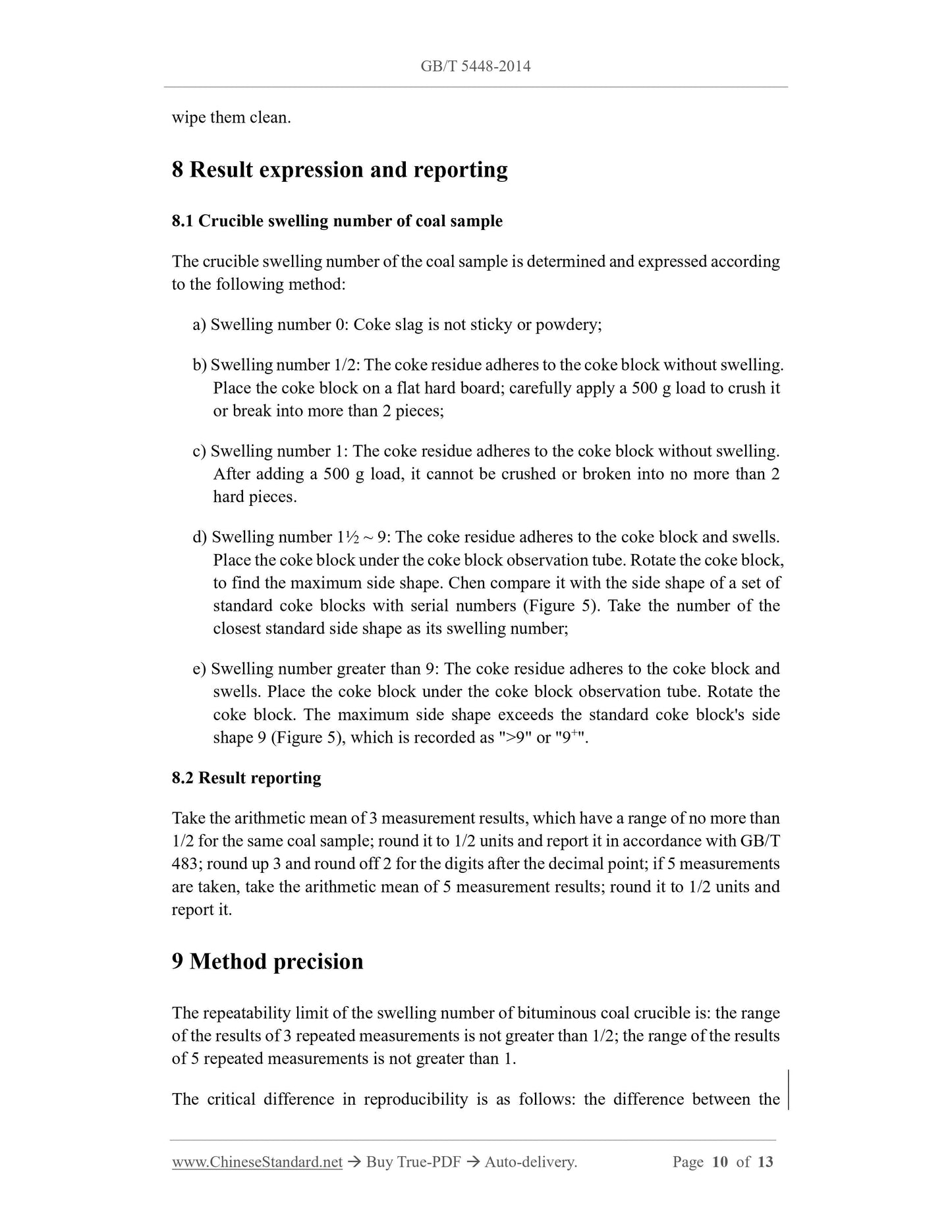1
/
of
6
www.ChineseStandard.us -- Field Test Asia Pte. Ltd.
GB/T 5448-2014 English PDF (GB/T5448-2014)
GB/T 5448-2014 English PDF (GB/T5448-2014)
Regular price
$230.00
Regular price
Sale price
$230.00
Unit price
/
per
Shipping calculated at checkout.
Couldn't load pickup availability
GB/T 5448-2014: Determination of the crucible swelling number of bituminous coal -- Electrical heating method
Delivery: 9 seconds. Download (and Email) true-PDF + Invoice.Get Quotation: Click GB/T 5448-2014 (Self-service in 1-minute)
Newer / historical versions: GB/T 5448-2014
Preview True-PDF
Scope
This standard specifies the method summary, instruments and equipment, testpreparation, test steps, result expression, method precision, test report, for determining
the crucible swelling number (CSN).
This standard applies to bituminous coal.
Basic Data
| Standard ID | GB/T 5448-2014 (GB/T5448-2014) |
| Description (Translated English) | Determination of the crucible swelling number of bituminous coal -- Electrical heating method |
| Sector / Industry | National Standard (Recommended) |
| Classification of Chinese Standard | D21 |
| Classification of International Standard | 73.040 |
| Word Count Estimation | 12,146 |
| Date of Issue | 6/9/2014 |
| Date of Implementation | 10/1/2014 |
| Older Standard (superseded by this standard) | GB/T 5448-1997 |
| Quoted Standard | GB 474; GB/T 483 |
| Adopted Standard | ISO 501-2003, MOD |
| Regulation (derived from) | National Standards Bulletin No. 11 of 2014 |
| Issuing agency(ies) | General Administration of Quality Supervision, Inspection and Quarantine of the People's Republic of China, Standardization Administration of the People's Republic of China |
| Summary | This Standard specifies the method for the determination of the crucible swelling number (CSN) of feed, equipment, test preparation, experimental procedure, results are expressed, precision of the method and experimental reports. This Standard applies to |
Share
